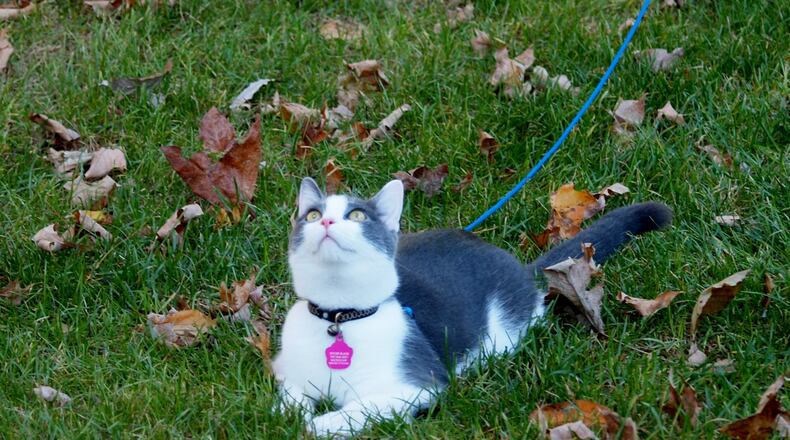Abby didn’t like most of our friends and extended family. Her hiss was legendary. She didn’t climb except to lounge on a chair or the back of our living room sofa. She rarely played with toys, and we tried plenty over her 17 years.
Pip’s sleep pattern is the same as Abby’s. At night, he stretches out on our bed’s bolster. At some point during the night, Pip jumps off and roams the house. By early morning, he’s back on the bed with me and my husband, Ed.
Both kitten and cat love(d) our family including my husband, Ed, daughter, Jordan and me. Pip is a little more affectionate.
Almost any time of the day, Pip loves to be petted, rubbed and stroked. When you rub Pip’s ears, his eyes close and he purrs loudly. Pip will tap or nudge you if you stop to encourage you to continue. He jumps into my lap every morning for a snuggle whether I want one or not.
Abby enjoyed those, too, but she was much choosier about when she wanted attention. When you rubbed Abby’s ears she would purr and stretch and turn her neck so each ear would get equal attention.
What got me comparing cat mannerisms was an article on curiosity.com that a good friend sent. The author discussed the best way to pet a cat.
In the article, Lauren Finka, a postdoctoral research associate at Nottingham Trent University, makes it seem as if the African wildcat is Pip’s and Abby’s likely ancestor.
A wildcat lives a solitary life. It works too hard to maintain that life through communicative visual and chemical messages. Pip and Abby may have inherited these antisocial contact skills.
Finka says that interacting with us was a learned behavior and the best time for cats to learn is as 2- to 7-week-old kittens. Her explanation made sense when comparing my two felines.
We adopted Abby when she was 6 months old. Her foster mom handled her but there were also four other kittens as well as their mother and one additional cat in the family all vying for human attention.
Pip was adopted at around 3 months. His foster mom as well as the people who took in his mother made a point of holding and stroking him and his brother.
Finka made the point that if we wanted Pip to “enjoy” us touching him we needed to give him as much choice and control during these interactions as possible. She said, “Due to our tactile nature and love of cute things, this approach may not come instinctively to many of us.”
Boy, she’s not kidding. I’ve tried for a week to only touch Pip when he initialed interacting with me. One look at his “kitten” face and I want to rock him like a human baby, though.
This is going to take a while.
Karin Spicer, a magazine writer, has been entertaining families for more than 20 years. She lives in Bellbrook with her family and two furry animals all who provide inspiration for her work. She can be reached at spicerkarin@gmail.com.
SIGNS OF CAT ENJOYMENT
1. Tail upright. Choosing to initiate contact.
2. Purring and kneading you.
3. Gently waving tail high and side to side.
4. Relaxed posture, facial expressions, ears pricked pointing forward
5. Gentle nudges for you to continue
SOURCE: Curiosity.com
About the Author
